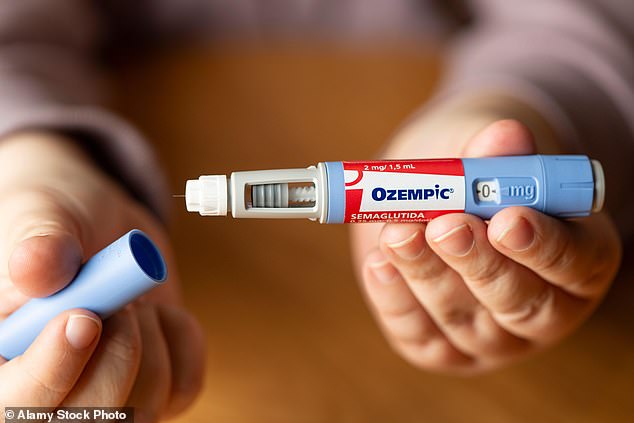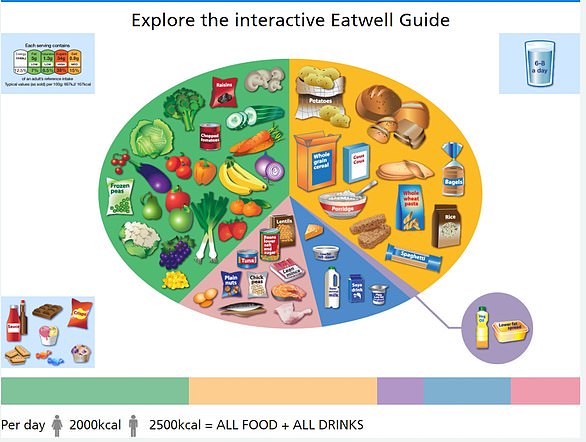Children as young as six should be given weekly weight-loss injections to combat childhood obesity and help avoid the type 2 diabetes crisis gripping the UK, a leading expert says.
This comes after Diabetes UK revealed that poor diets have led to a 39 per cent rise in the condition among under-40s over the past seven years.
Studies show that giving semaglutide (also known as Ozempic and Wegovy) to obese children could reduce their chances of developing the disease by up to 90 percent.
Administered by self-injection once a week, the medication controls blood sugar and helps patients lose weight by suppressing appetite.
Professor Carel Le Roux, a leading obesity and diabetes researcher, said: “It is a good option to treat children with the disease of obesity, even from the age of six, absolutely.”
Studies have shown that adults taking semaglutide can lose enough weight around their organs to reduce their risk of diabetes by 90 percent, or even put existing cases into remission.
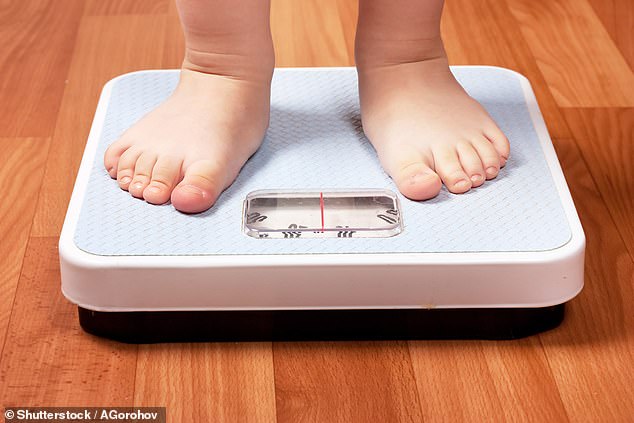
And a “mind-blowing” international trial involving children as young as 12 showed the same results applied to younger patients.
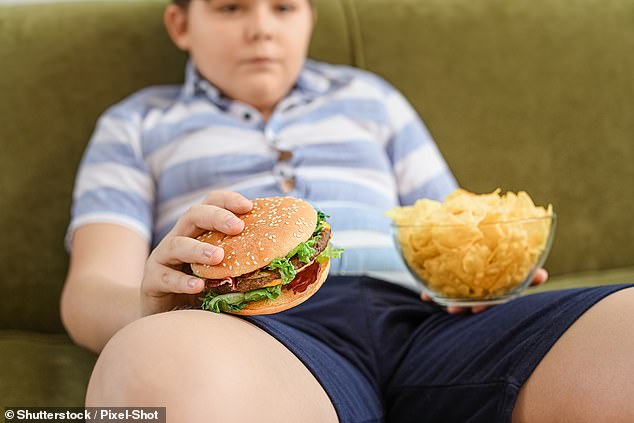
When dietary interventions have failed, children should be offered semaglutide treatment, experts say
‘The goal is to improve health, not lose weight. If you have a six-year-old child who has apnea and mobility problems and you treat him to improve his health, it is the right thing to do.
“If they don’t have complications from obesity, then they may not be obesity.”
Danish pharmaceutical giant Novo Nordisk, which makes the popular semaglutide injections under the brand names Ozempic and Wegovy, has already announced a global trial in children, including in the UK.
Studies have shown that adults taking semaglutide can lose enough weight to reduce their risk of diabetes by 90 percent, or even put existing cases into remission.
And a “mind-blowing” international trial involving children as young as 12 showed the same results applied to younger patients.
Professor Le Roux said giving the drug to children could help reduce the number of cases of diabetes among young people.
‘I would like everyone in the world to run more and have a healthier diet. But running and eating healthy do not cure the disease of obesity, and we must be clear about this.’
‘We have rare diseases such as familial hypercholesterolemia, in which children are born with high cholesterol and develop heart attacks between the ages of 20 and 30.
‘We can determine the risk almost from birth, so the question arises of when to start taking (cholesterol-lowering) medications to reduce the risk.
‘We should look at this the same way. If we put obesity in the same box as all other childhood diseases, it is no different.
‘We treat it like any other disease, so we are thinking about how to make patients healthier and when the benefits of treatment outweigh the risks. That’s what we have to do: forget about weight and focus on health.’
He added that evidence suggests that obesity relapses as soon as patients stop taking semaglutide, so they should be prepared to take it for the rest of their lives.
But Professor Barbara McGowan, a diabetes expert at King’s College London, said she would be reluctant to give semaglutide to children before all other options have been exhausted.
‘Simply giving pharmacotherapy to children is not the solution. But it can be part of an intervention for some children.
‘We have an obesity epidemic, and obesity and type 2 diabetes go hand in hand.
‘We need much broader changes at the system level. We need to change the environment: address the food industry, advertising, fast food establishments, portion sizes, etc. It is a very complex situation.
‘We need to educate in school. We need to educate health professionals, as well as parents and the rest of the population.
‘For children who are really struggling, where all lifestyle interventions have been exhausted, semaglutide may be another weapon in the arsenal to help treat them.
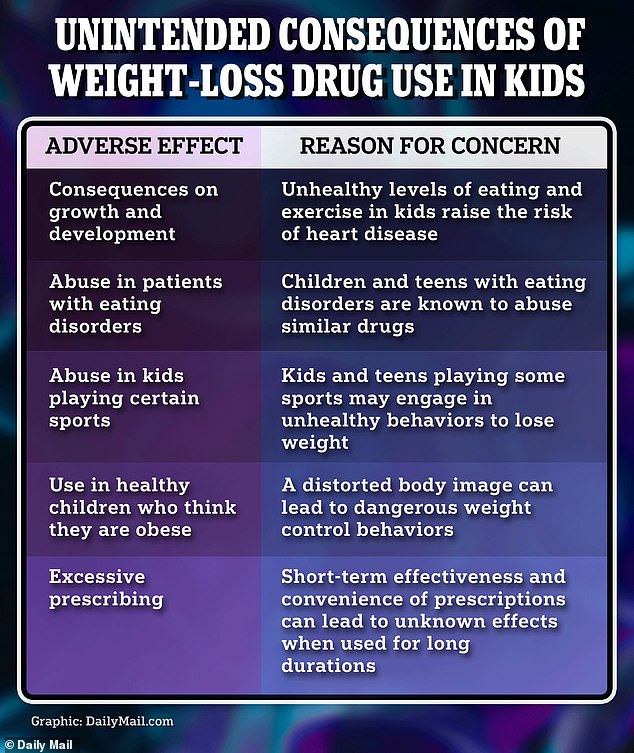
Researchers described several unintended harmful consequences that could arise in children taking weight-loss medications.
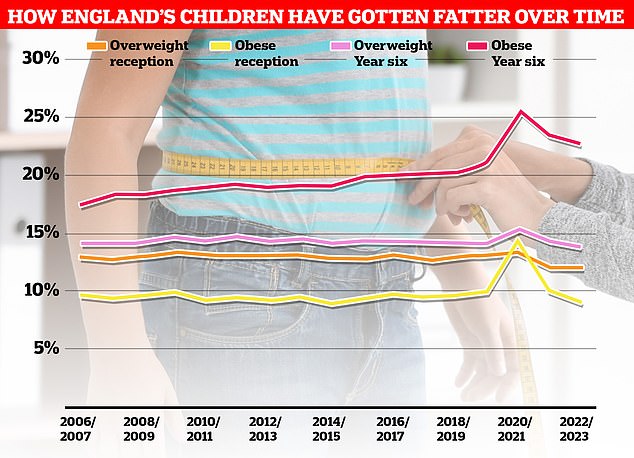
More than one million children have had their height and weight measured under the National Child Measurement Program (NCMP). Nationally, the rate among Year 6 children stands at more than a third, despite having fallen slightly since Covid began.
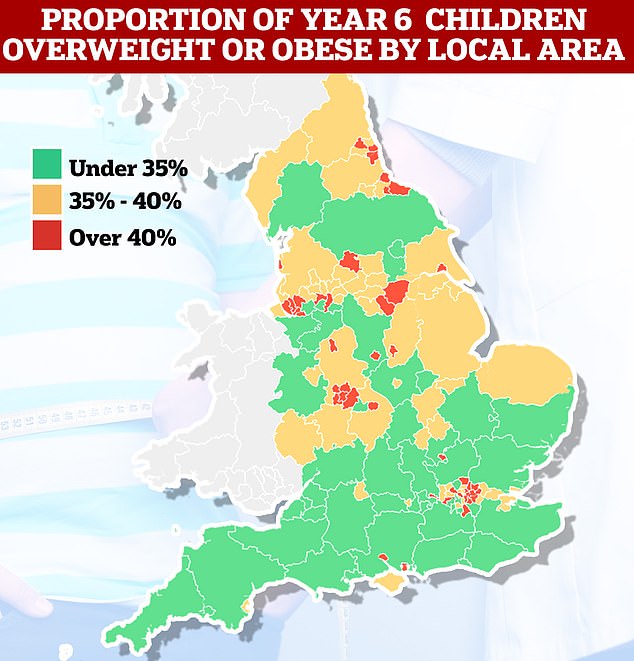
Among sixth-form pupils, national obesity fell from 23.4 per cent in 2021/22 to 22.7 per cent. Meanwhile, the proportion of children considered overweight or obese also decreased, from 37.8 percent to 36.6. Both measures are above pre-pandemic levels
‘But it has to be part of a multifaceted approach. It is not a magic solution. But there will be kids who will struggle and hopefully this will help.
‘These medications help improve diabetes, but they also act on the centers in the brain that affect appetite. It can quell cravings and help address diet so they are more likely to eat healthy foods.
“Early intervention can help prevent many of the complications that cost a lot of money when it comes to treating type 2 diabetes.”
The NHS said current semaglutide medicines such as Wegovy are not authorized for children under 12, and the government’s medicines rationing body, NICE, does not currently provide funding for people under 17.
Technically, children can still receive semaglutide in the UK, because doctors can prescribe it to children because, on the basis that the drug is already approved for use in adults, it is standard of practice for numerous medications.
In theory, NHS doctors can give it to children because the drug is already approved for use in adults, a standard of practice for numerous drugs.
The US and EU have already approved the drug for use in obese children aged 12 and older in limited circumstances.
However, the NHS medicines watchdog, the National Institute for Health and Care Excellence (NICE), said it was unable to make a recommendation on Wegovy in children in June, citing a lack of evidence from Novo Nordisk. .
The latest data on childhood obesity in England shows that one in 10 children are too fat when they start primary school, a figure rising to around one in four by Year 6.
Obesity also has a huge financial cost in the UK, with subsequent health consequences in terms of lost years of work, care costs and NHS treatment prices costing the economy an estimated £100k. million per year.
Experts have pointed to a lack of exercise and poor diets high in ultra-processed foods as key factors in the UK’s childhood obesity epidemic.

